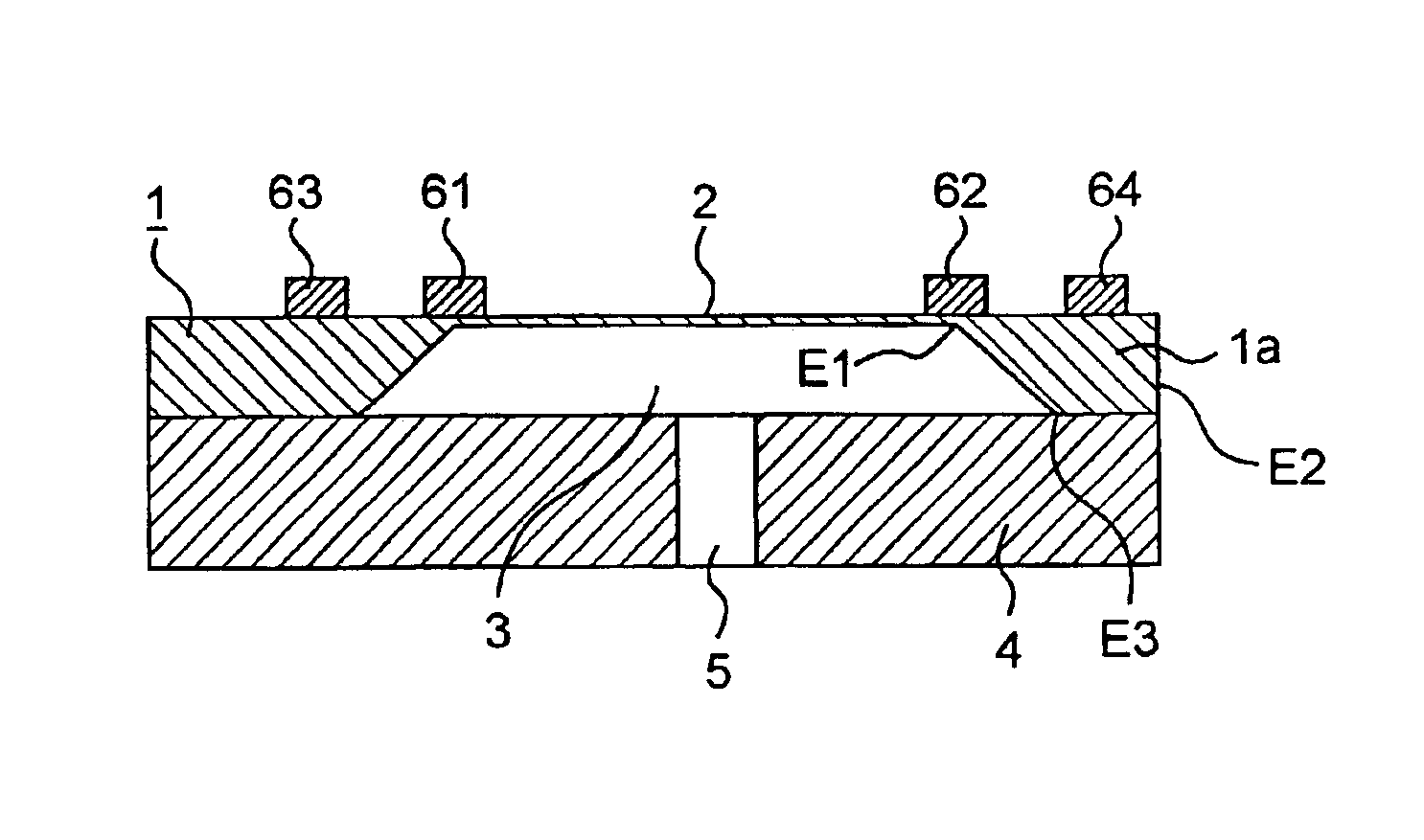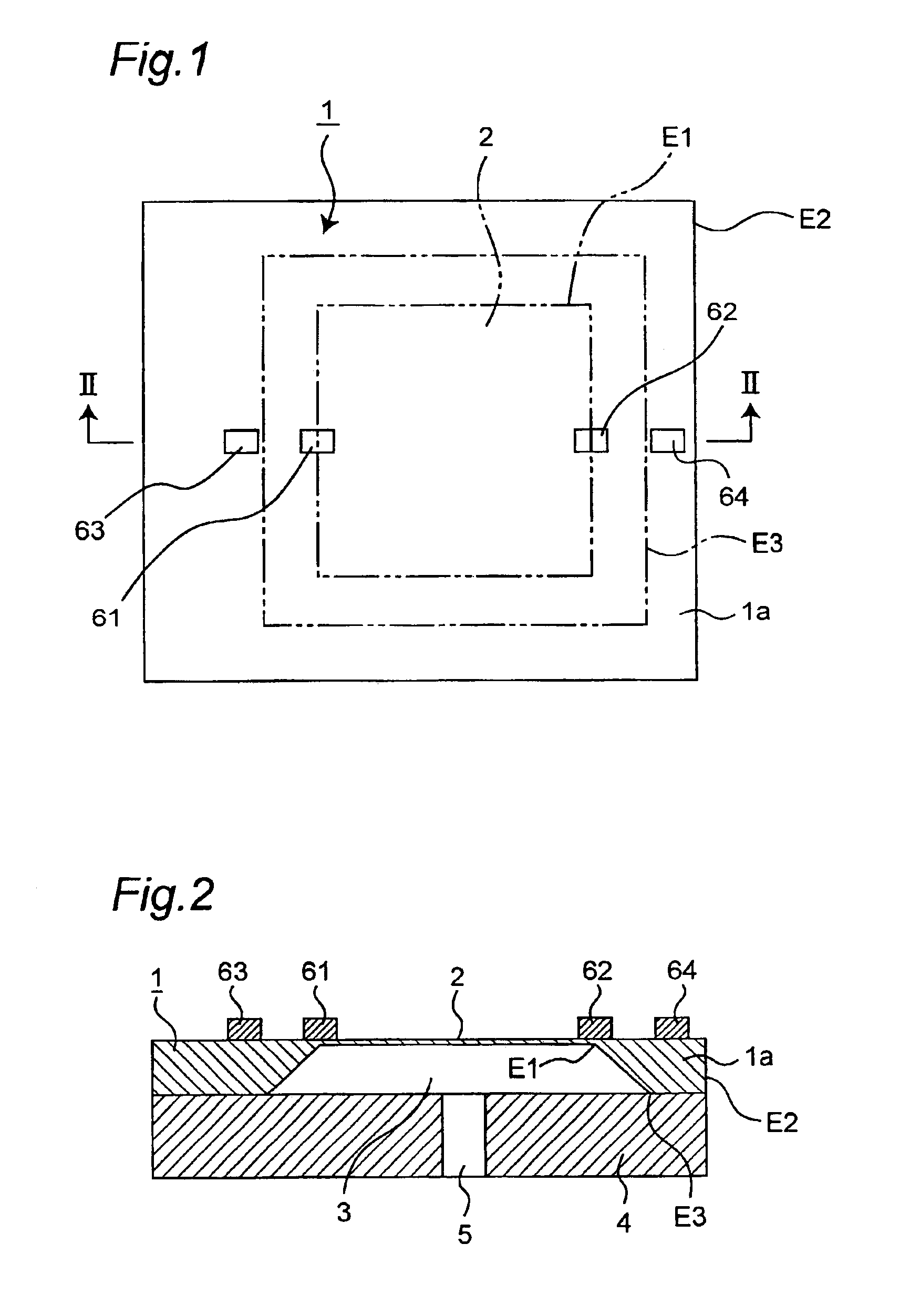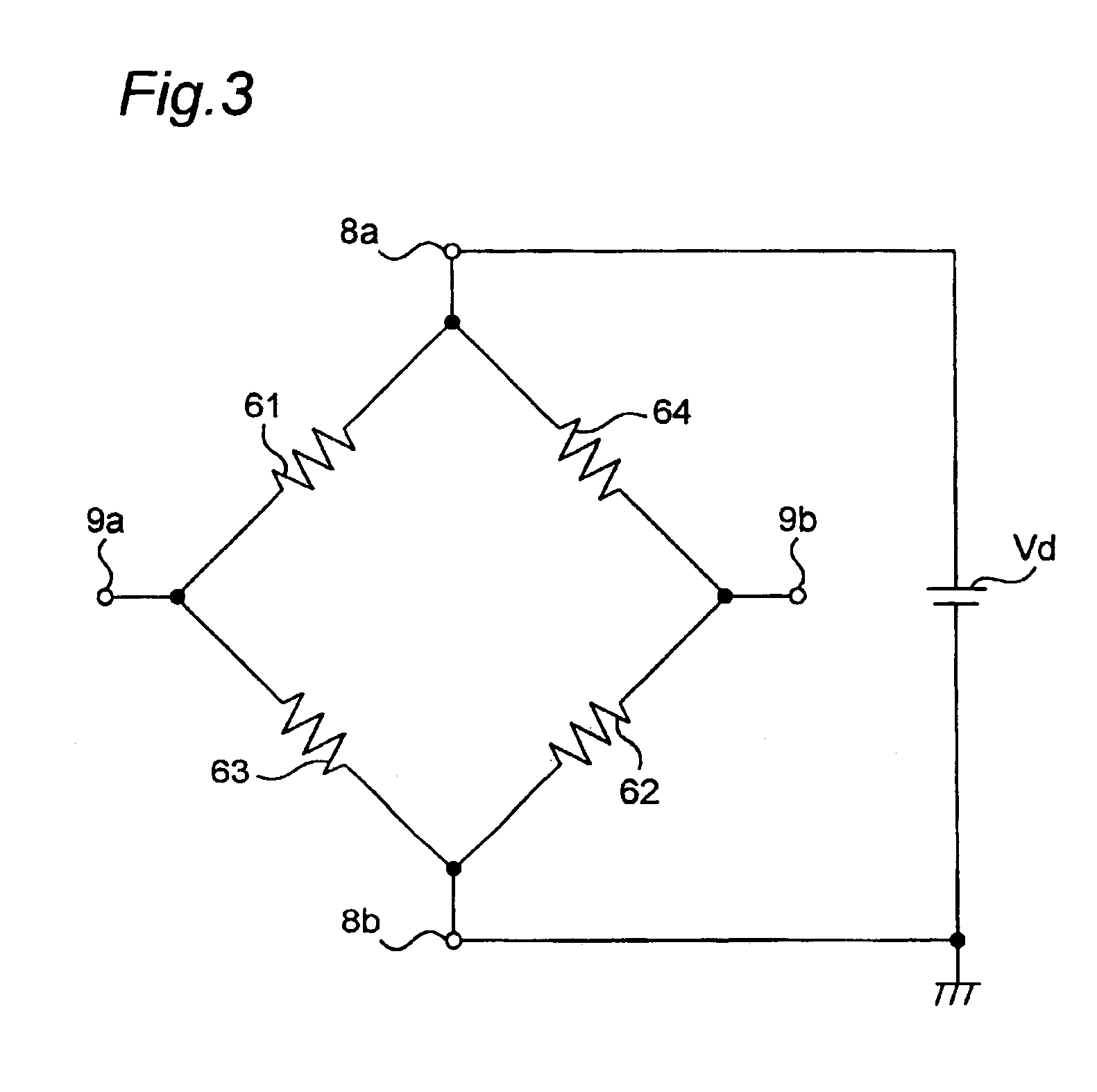Mechanical deformation amount sensor
a sensor and mechanical technology, applied in the field of mechanical deformation amount sensors, can solve the problems of large size of strain sensors as a whole, disadvantage of sensitivity drop, and difficulty in obtaining higher sensitivity beyond the potential power of piezoelectric resistance, and achieve the effects of increased sensitivity, and large change of electrical conductivity
- Summary
- Abstract
- Description
- Claims
- Application Information
AI Technical Summary
Benefits of technology
Problems solved by technology
Method used
Image
Examples
first embodiment
As shown in FIGS. 1 and 2, a mechanical deformation amount sensor according to a first embodiment acts as a pressure sensor for detecting fluid pressure. In this embodiment, a sensor structure 1 is a so-called micro-electro-mechanical systems (MEMS) sensor chip (semiconductor pressure sensor chip) obtained by working a silicon substrate and is constituted by a support portion 1a having a shape of a rectangular frame and a thin-walled diaphragm 2 occupying an inside space of the frame of the support portion 1a. In this pressure sensor chip 1, the diaphragm 2 acting as a thin-walled pressure bearing portion is formed by digging a recess 3 into a portion of a rear face of the pressure sensor chip 1 by anisotropic etching such that a bottom wall of the recess 3, namely, the diaphragm 2 has a predetermined thickness. Thus, as shown in FIG. 1, the support portion 1a has three rectangular frame edges, i.e., an innermost rectangular frame edge E1 bounding the diaphragm 2, an outermost recta...
second embodiment
FIGS. 8 and 9 show a semiconductor pressure sensor according to a second embodiment of the present invention. In the first embodiment, a surface of the pressure sensor chip 1 including the diaphragm 2 is flat and the carbon nanotube resistance elements 61 and 62 are arranged and fixed on this flat surface of the pressure sensor chip 1. The second embodiment is designed to make the best use of such a property of a carbon nanotube that electric resistance of the carbon nanotube changes greatly at its location having a large angle of deformation.
Namely, in this embodiment, a step portion 12 is formed at a boundary of the peripheral edge portion, i.e., a deformation portion of the diaphragm 2 and the support portion 1a as shown in FIG. 9 such that a surface of the diaphragm 2 is set lower than that of the support portion 1a surrounding the diaphragm 2. Each of the carbon nanotube resistance elements 61 and 62 is disposed and fixed so as to longitudinally stride over the step portion 12 ...
third embodiment
FIGS. 11 and 12 show a semiconductor pressure sensor according to a third embodiment of the present invention. In the first and second embodiments, the bridge circuit is formed by providing the reference resistance elements 63 and 64. In this embodiment, reference resistance elements 63′ and 64′ are provided at a central portion of a surface of the diaphragm 2 such that an axial direction of the reference resistance elements 63′ and 64′ is parallel to that of the carbon nanotube resistance elements 61 and 62 disposed in the peripheral edge portion of the diaphragm 2 and a bridge circuit shown in FIG. 13 is formed by using the reference resistance elements 63′ and 64′. The reference resistance elements 63′ and 64′ are constituted by carbon nanotubes.
In the semiconductor pressure sensor, when fluid pressure is introduced into the recess 3 from the pressure introduction bore 5 of the base 4, a central portion of the diaphragm 2 is deflected by the fluid pressure so as to be expanded up...
PUM
| Property | Measurement | Unit |
|---|---|---|
| temperature | aaaaa | aaaaa |
| physical | aaaaa | aaaaa |
| electrical conductivity | aaaaa | aaaaa |
Abstract
Description
Claims
Application Information
 Login to View More
Login to View More - R&D
- Intellectual Property
- Life Sciences
- Materials
- Tech Scout
- Unparalleled Data Quality
- Higher Quality Content
- 60% Fewer Hallucinations
Browse by: Latest US Patents, China's latest patents, Technical Efficacy Thesaurus, Application Domain, Technology Topic, Popular Technical Reports.
© 2025 PatSnap. All rights reserved.Legal|Privacy policy|Modern Slavery Act Transparency Statement|Sitemap|About US| Contact US: help@patsnap.com



